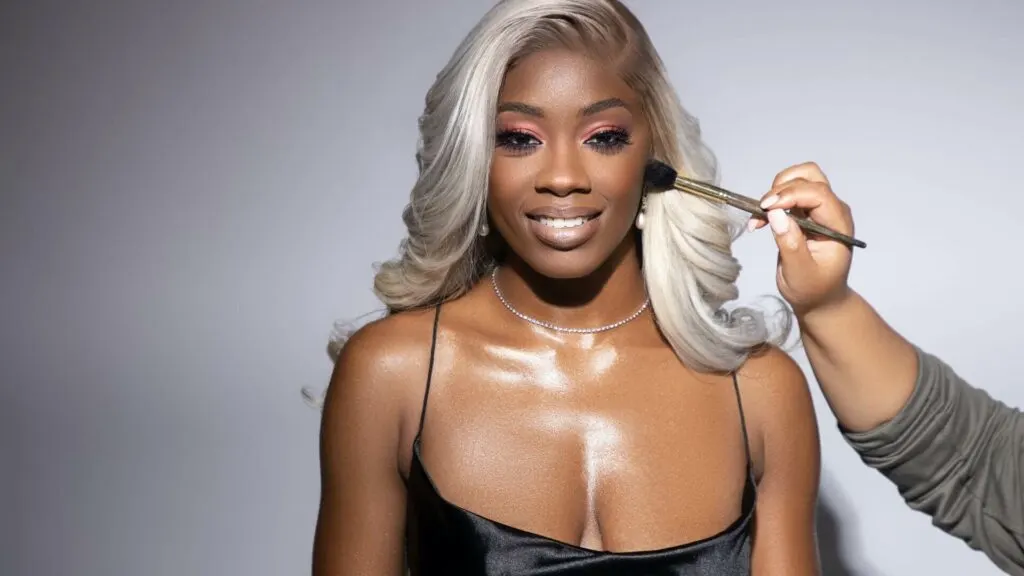When choosing a 360 lace wig, the density of the wig plays a crucial role in determining both the aesthetic appeal and the comfort of the wearer. These wigs, known for their full perimeter of lace that allows for versatile styling, can transform your appearance dramatically. Whether you’re looking for a wig that offers a natural look for daily wear or a more glamorous style for special occasions, understanding how to select the right density is key. Equally important is knowing how to properly maintain your wig to ensure it lasts as long as possible while maintaining its fresh, vibrant look. This article will guide you through selecting the ideal wig density for your style goals and provide essential tips on maintaining your 360 lace wig to extend its lifespan.
Understanding Wig Density

Definition of Wig Density
Wig density refers to the amount of hair knotted into the cap of the wig, directly affecting its fullness and volume. Measured in percentages, density ranges typically from 130% to 200%, with higher numbers indicating more hair. This factor is critical in how the wig will look and feel, as it influences the wig’s weight, styling capabilities, and the natural flow of the hair.
Density Options
- 130%-150% Density: These wigs offer a light to medium fullness that mimics the natural density of human hair, making them perfect for those seeking a realistic and breathable wig option.
- 180% Density: A choice for those desiring a fuller look, 180% density provides significant volume without being overly heavy, ideal for vibrant, eye-catching styles.
- 200% and Above: The highest densities available, these wigs are favored for theatrical, fashion, and special event purposes where a luxuriant and lush appearance is desired.
Choosing the Right Density for Your Style
Selecting the right density should be influenced by several factors:
- Personal Style: Consider whether you prefer a more understated, natural look or a full, glamorous appearance.
- Lifestyle: Think about your daily activities. Higher density wigs may not be as comfortable or practical for those with a very active lifestyle or for wearing in warmer climates.
- Natural Hair Volume: Match the wig density to your natural hair volume for a seamless look if you plan to blend the wig with your natural hair at any point.
Understanding these options and considerations will help you make an informed decision about which wig density will best meet your needs, ensuring comfort and satisfaction with your 360 lace wig. This foundation sets the stage for achieving both a satisfying appearance and practical functionality from your wig choice.
Specifics of 360 Lace Wig Density

150% Density
A 150% density in 360 wigs offers a natural and lightweight option that is ideal for everyday use. This density is close to the natural hair volume of many people, providing enough coverage to look full while maintaining a realistic appearance. It’s particularly suitable for those new to wigs or who prefer their hair to have a subtle volume that does not overwhelm the face.
Higher Densities
For those seeking more dramatic styling options, higher densities like 180% or 200% provide considerable volume and presence. These densities are excellent for special occasions, such as weddings, photoshoots, or other events where a bold look is desired. The additional hair in these wigs allows for a range of styling that can hold curls and updos more robustly, giving the wearer confidence in their wig’s ability to maintain the desired style throughout the day.
Visual Comparisons
Visual comparisons can be very helpful in selecting the right density. For instance, images or videos showing the same wig style in 150%, 180%, and 200% densities worn by a model can illustrate how each option impacts the overall look. These comparisons make it easier for potential buyers to gauge how much volume and fullness they can expect from each density level.
Maintenance Tips for 360 Lace Wigs

Routine Cleaning
To keep your 360 lace wig looking fresh, routine cleaning is essential. Depending on how frequently the wig is worn, it should be washed gently every 10 to 14 days with a sulfate-free shampoo and a moisturizing conditioner. It’s crucial to wash the hair in one direction—from root to tip—to avoid tangling and to lay the wig on a towel to air dry.
Drying and Styling
After washing, the wig should be air-dried on a wig stand to maintain its shape and prevent mildew. While heat styling is possible, it should be done sparingly and with a heat protectant to prevent damage to the hair fibers. When brushing, use a wide-tooth comb and start detangling from the tips, gradually working up to the roots to minimize breakage.
Proper Storage
Proper storage of your 360 lace wig extends its lifespan significantly. When not in use, the wig should be placed on a wig stand or in a silk bag to prevent tangling and dust accumulation. Avoid storing wigs in direct sunlight or damp areas, as this can fade the hair color and promote the growth of mold.
By following these detailed guidelines for choosing the right density and maintaining your 360 lace wig, you can enjoy a beautiful, natural-looking hairstyle that lasts. These practices not only preserve the quality and appearance of the wig but also ensure that it remains a valuable part of your beauty regimen.
Advanced Care Techniques

Handling Lace and Adhesives
Proper handling of the lace is critical to maintaining the integrity of a 360 lace wig. Use minimal adhesive to avoid residue buildup, which can damage the lace and reduce the wig’s lifespan. When applying adhesives for a firmer hold, ensure they are specifically designed for lace wigs to prevent allergic reactions and damage to the hairline. Removing the wig should involve a dedicated adhesive remover to gently dissolve the glue without pulling at the lace, which can cause tearing.
Revitalizing Old Wigs
Over time, even the best wigs can show signs of wear. To revitalize an old 360 lace wig, begin by gently washing it to remove product buildup. Applying a deep conditioning treatment can restore moisture and revive the wig’s curls or waves. For wigs that have lost their luster or have become frizzy, a silicone-based serum can be used sparingly to add shine and reduce frizz. If the wig starts to thin, consider having it professionally re-wefted to add additional hair strands.
Common Mistakes to Avoid

Mistakes in Density Selection
One common mistake in wig selection is choosing a density that does not match one’s natural hair or desired style. High-density wigs, while luxurious, can be uncomfortable and impractical for daily wear, whereas too light a density might not provide adequate coverage. Evaluate your daily routine and style preferences when choosing density to avoid dissatisfaction.
Maintenance Missteps
Neglecting routine maintenance like regular washing and deep conditioning can lead to a buildup of oils and styling products, which can degrade the hair quality. Storing wigs improperly can also lead to issues like tangling and mold growth. Regular maintenance not only extends the wig’s life but also keeps it looking beautiful and natural.
Choosing the right density and maintaining your 360 lace wig are key to enjoying its full potential in both style and longevity. By understanding the different density options and adhering to proper care techniques, you can ensure your wig remains a vibrant and versatile part of your beauty arsenal. Remember, a well-maintained wig is not just an accessory but an investment in your style and confidence.

Jessi is the creative mind behind The Coffee Mom, a popular blog that combines parenting advice, travel tips, and a love for all things Disney. As a trusted Disney influencer and passionate storyteller, Jessi’s authentic insights and relatable content resonate with readers worldwide.
